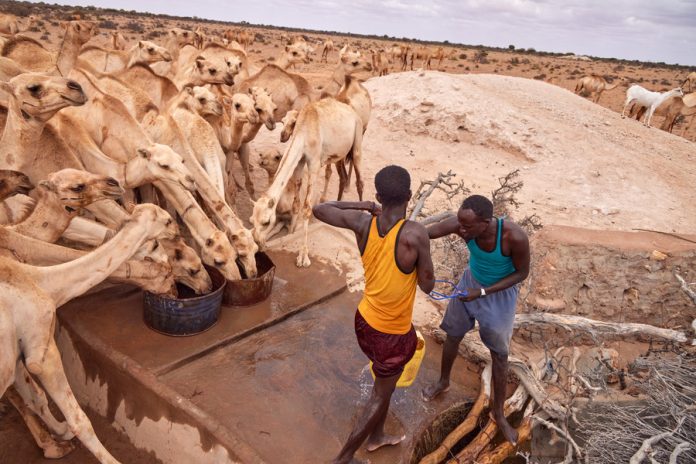Somali Magazine – Climate change, poverty, and inequality are the defining issues that have affected a handful of African developing countries, including Somalia, Burkina Faso, Cameroon, the Central African Republic, the DRC Congo, Ethiopia, Mali, Mozambique, Niger, Nigeria, South Sudan, and Sudan.
Somalia, as one of the countries frequently afflicted by conflicts, has lived in a climate-vulnerable state, overburdened by climatic impacts and underserved by international financing. The International Rescue Committee (IRC) has stepped forward, urging for proper action to ensure that conflict-affected nations have equal access to the forthcoming climate summit (COP28) in the United Arab Emirates (UAE).
The IRC says African countries such as Somalia and South Sudan constitute a new and increasing global hub of disaster and should be given more attention as the world moves toward a greener ecosystem.
The underdeveloped countries in Africa and the rest of the world account for 10 per cent of the global population and less than 3 per cent of global greenhouse gas emissions, while 44 per cent of the global population lives in extreme poverty and 60 per cent rely on global humanitarian aid.
It’s a big shock that Africa is responsible for only a fraction of global greenhouse gas emissions but is suffering disproportionately from climate change. This is harming food security, ecosystems, and economies, fueling displacement and migration, and worsening the threat of conflict over dwindling resources, according to a new report from the World Meteorological Organization (WMO).
Emergency Event Database shows 110 million people on the continent were directly affected by weather, climate, and water-related hazards in 2022, causing more than US$8.5 billion in economic damages. There were a reported 5 000 fatalities, of which 48 per cent were associated with drought and 43 per cent were associated with flooding. But the true toll is likely to be much higher because of underreporting.
“East Africa is on the brink of a humanitarian catastrophe: the worst drought in 40 years makes severe malnutrition, livestock loss, food and water shortages, and displacement a daily reality for 40 million people in the region.
“The anticipated Relief, Recovery, and Peace Declaration should recognize the unique challenges facing climate-vulnerable, conflict-affected communities and the ways they are being left behind by the existing approach to climate action. Clear financing targets and accountability will be required to turn the words of the declaration into tangible progress for communities in need.
“The question before us is whether we will seize this moment and demonstrate our commitment to prioritizing the most affected communities, or continue down the path of inaction, allowing climate injustice to not only persist but grow,” said Shashwat Saraf, East Africa regional emergency director.
Ahead of COP28, the International Rescue Committee (IRC) has released a paper, Climate Action for the Epicenter of Crisis: How COP28 Can Address the Injustices Facing Conflict-Affected Communities, which calls on international leaders to correct the route, prioritize these communities, and commit to four key actions for climate justice.
Among the key actions to address are improving the risk mapping of conflict-affected communities, investing in innovative adaptation, resilience, and anticipatory action designed for conflict settings instead of focusing on mitigation alone.
Adopt a “people-first” approach to delivery through effective non-governmental partnerships to make climate money available to local actors and civil society groups, especially often-overlooked women’s groups; and make climate finance more fair and accessible to appropriately resourced action by completing the $100 billion per year climate pledge and raising ambition for the new 2025 objective, which will begin with a $100 billion floor.
On the other hand, donors are expected to contribute at least 5 per cent of humanitarian funds to anticipatory intervention, provided flexibly and ahead of emergencies, with a plan for additional increase by 2030.

